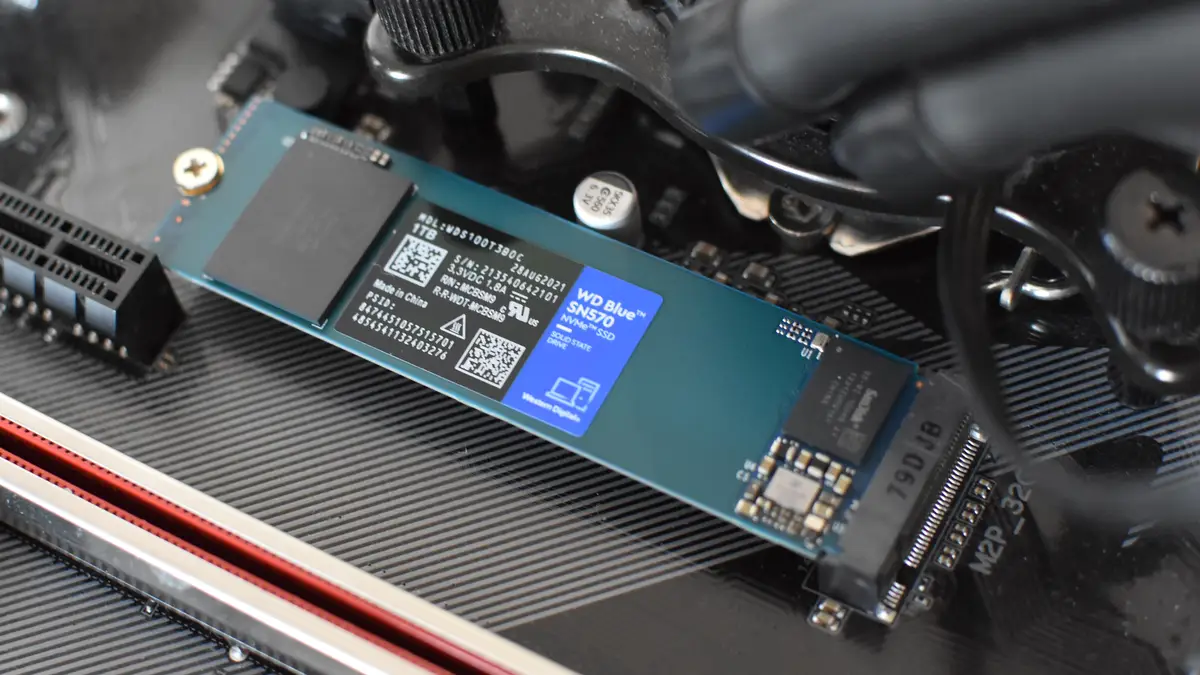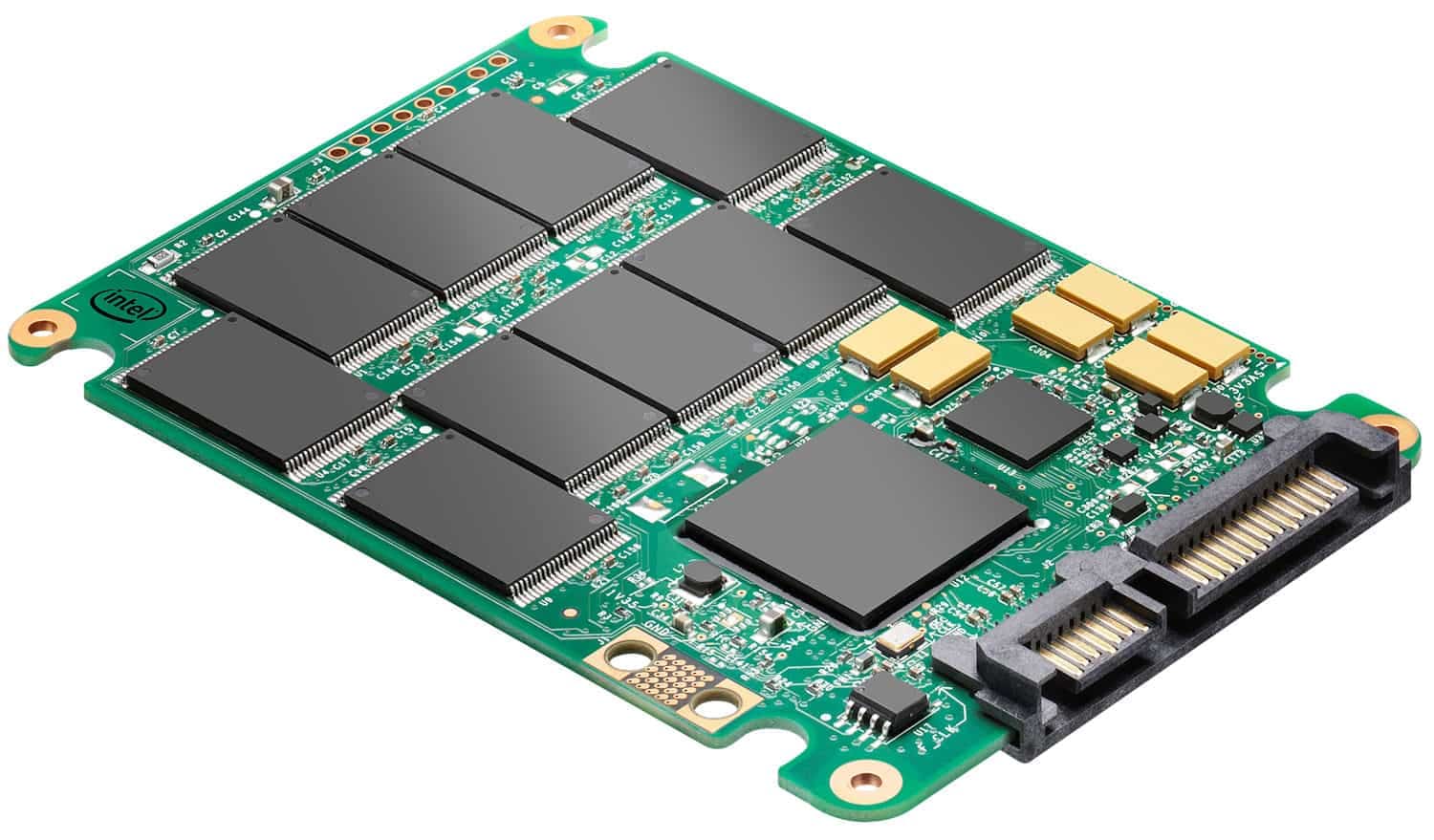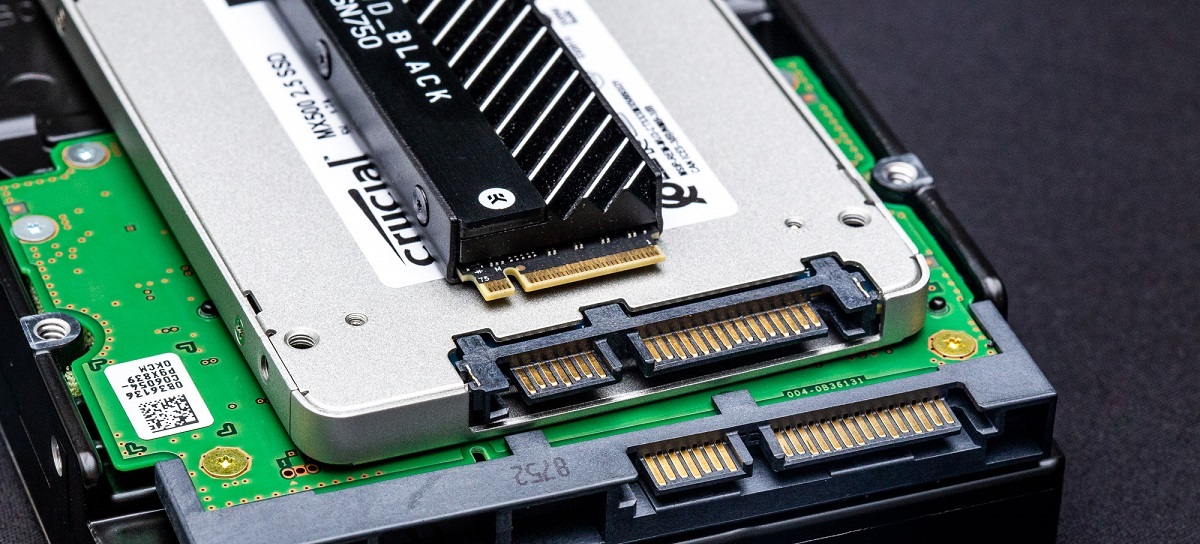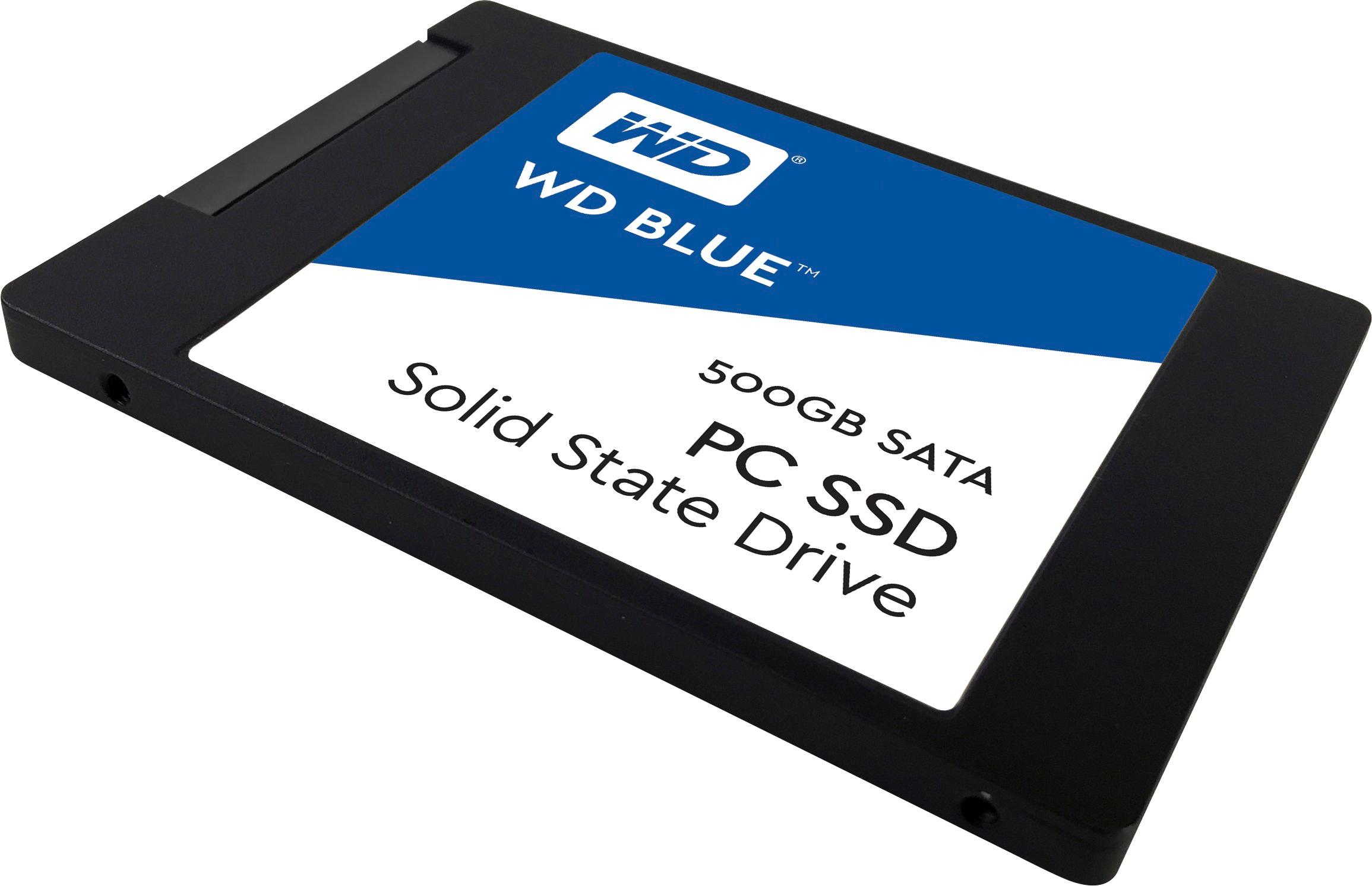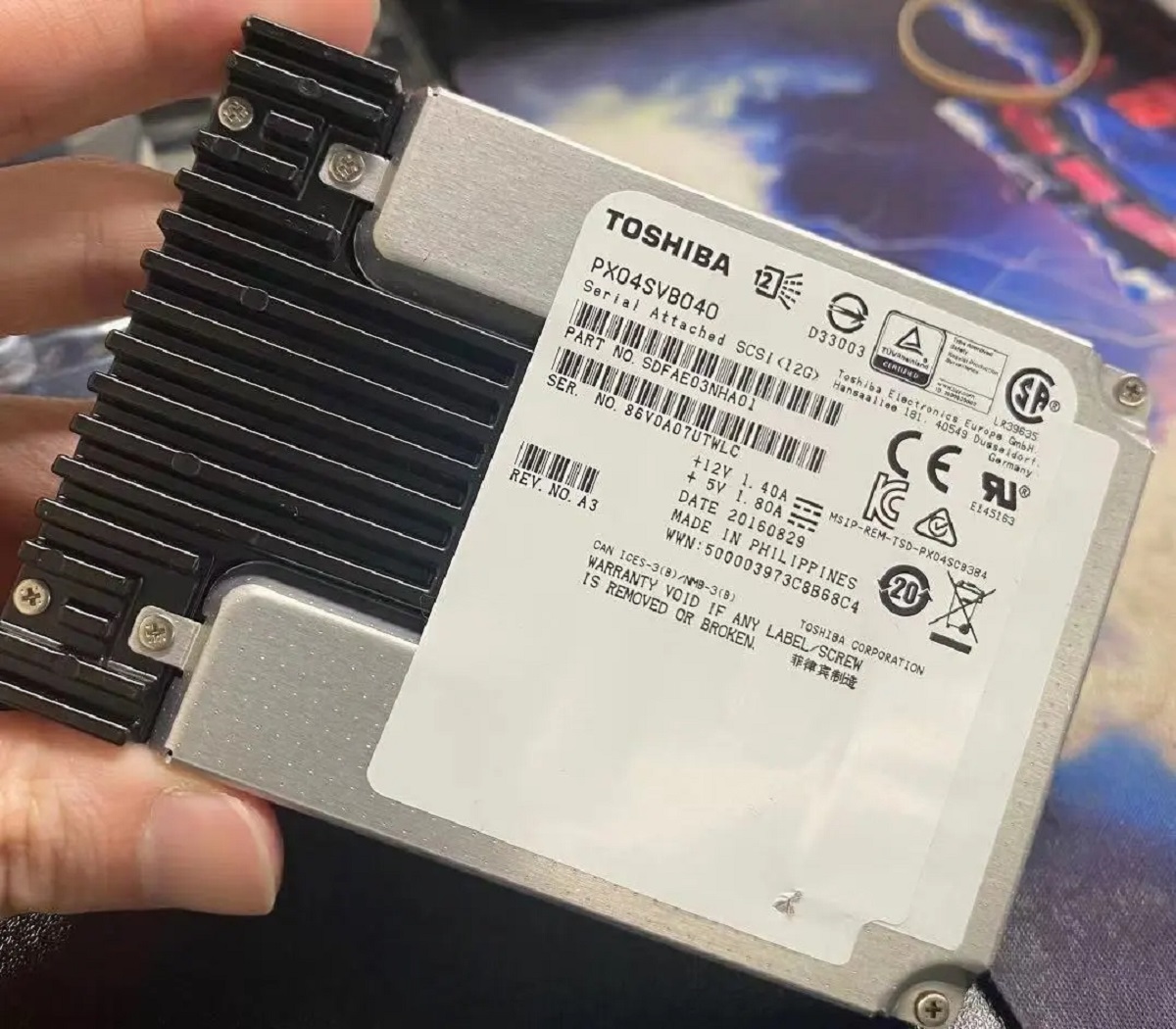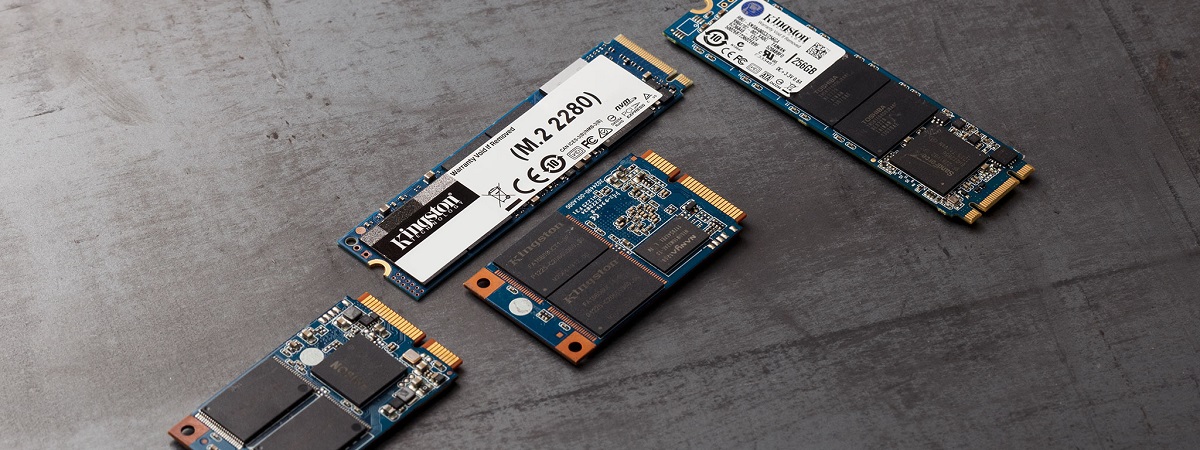Introduction
Welcome to the world of solid-state drives (SSDs), one of the most significant advancements in storage technology in recent years. Whether you’re a tech enthusiast, a gamer, or a professional who relies on speedy data access, understanding the inner workings of SSDs is crucial.
When it comes to SSDs, you might have come across the term “read write cycle.” But what exactly does it mean, and how does it impact the lifespan and performance of your SSD? In this article, we’ll delve into the concept of read write cycles and explore how many cycles are typical for SSDs.
Before we dive in, let’s quickly recap what an SSD is. Unlike traditional hard disk drives (HDDs) that use spinning disks and mechanical read/write heads, SSDs use NAND flash memory to store and retrieve data. This flash memory, similar to what you find in USB drives and memory cards, provides faster data access, improved durability, and lower power consumption.
As with any technology, SSDs have their limitations, and one of them is related to read write cycles. Understanding this concept will help you make informed decisions about your storage needs and how to maximize the lifespan of your SSD.
So, what exactly is a read write cycle in the context of SSDs? To put it simply, a read write cycle refers to the process of writing data to or reading data from the storage cells in an SSD. Each time data is written to a cell, it undergoes a physical change in its electronic charge state. Over time, as these cells are repeatedly written and erased, they can degrade, leading to potential data loss or reduced performance.
What is Read Write Cycle in SSD?
Before we delve deeper into the topic, let’s understand what a read write cycle actually means in the context of SSDs. A read write cycle, also known as program/erase (P/E) cycle or write-erase cycle, refers to the process of writing data to and erasing data from the flash memory cells in an SSD.
In SSDs, data is stored in a grid-like array of memory cells, with each cell representing a bit of data. These cells can be programmed to store data by applying electrical charges to them. When you write data to an SSD, the cells are programmed with the appropriate charges to represent the desired information.
However, unlike traditional hard disk drives (HDDs), where data can be overwritten multiple times without any significant impact, SSDs have a finite number of times that each cell can be programmed and erased. This is known as the endurance or the number of program/erase cycles an SSD can withstand before potential data degradation or failure.
Each time a cell in an SSD undergoes a full write and erase cycle, it counts as one program/erase cycle. It’s important to note that not all cells in an SSD experience the same level of writes or erases; some cells may be used more frequently than others, depending on how the data is distributed and how often it is updated.
The number of read write cycles an SSD can endure before significant degradation varies depending on the specific SSD model and the type of NAND flash memory technology used. Generally, consumer-grade SSDs offer endurance ratings ranging from 75 to 3000 program/erase cycles, while enterprise-grade SSDs can provide significantly higher endurance levels ranging from 30,000 to 100,000 or more cycles.
It’s important to understand that the endurance rating of an SSD is not a fixed number but rather an estimate based on the flash memory technology and the overall design of the drive. While an SSD may be rated for a certain number of cycles, it’s not a guarantee that the drive will fail immediately after reaching that limit. Instead, it indicates the point at which the manufacturer estimates that the drive may start experiencing higher error rates or diminished performance.
It’s worth mentioning that with advancements in SSD technology, the endurance of modern SSDs has significantly improved compared to earlier models. Newer SSDs utilize techniques such as wear leveling and over-provisioning, which help distribute the write and erase operations across the entire drive, minimizing the impact on any individual memory cell and extending the overall lifespan of the SSD.
How Many Read Write Cycles are Typical for SSDs?
When it comes to the number of read write cycles that are typical for SSDs, it’s important to understand that not all SSDs are created equal. The endurance of an SSD can vary significantly depending on factors such as the type of NAND flash memory used and the intended usage of the drive.
Consumer-grade SSDs, which are designed for everyday use, usually come with endurance ratings ranging from 75 to 3000 program/erase cycles. These SSDs are suitable for most home and office applications, including web browsing, document editing, and light gaming.
On the other hand, enterprise-grade SSDs, which are designed for heavy workloads and demanding applications, tend to have much higher endurance levels. These SSDs are built to handle extensive data writes and offer endurance ratings ranging from 30,000 to 100,000 or more program/erase cycles.
It’s worth noting that the endurance rating provided by the manufacturer should be taken as a rough estimate rather than an exact value. The actual number of cycles an SSD can withstand may vary based on several factors, including the amount and frequency of data writes, the operating temperature, and the overall usage conditions.
Furthermore, SSDs with multi-level cell (MLC) NAND flash memory, which stores multiple bits of data per memory cell, generally have higher endurance compared to solid-state drives with triple-level cell (TLC) or quad-level cell (QLC) NAND flash memory. However, TLC and QLC SSDs offer higher capacities at a more affordable price point, making them a popular choice for consumers.
It’s important to consider your specific needs and usage patterns when determining the appropriate SSD endurance for your system. If you’re a casual user who primarily uses your computer for everyday tasks, a consumer-grade SSD should suffice. However, if you’re a professional working with large datasets or running resource-intensive applications, an enterprise-grade SSD with higher endurance may be more suitable.
Ultimately, when it comes to read write cycles, it’s not just about the number of cycles an SSD can endure, but also how efficiently you manage and optimize your storage usage. By adopting good SSD maintenance practices, such as avoiding excessive write operations, regularly updating firmware, and enabling features like TRIM, you can extend the lifespan and optimize the performance of your SSD.
In the next section, we’ll explore the factors that can affect the read write cycles of SSDs and how to understand SSD endurance in more detail.
Factors That Affect Read Write Cycles in SSDs
While SSDs offer numerous advantages over traditional hard disk drives, it’s important to be aware of the factors that can affect the read write cycles and overall lifespan of an SSD. Understanding these factors will help you optimize the performance and longevity of your SSD.
1. Workload and Usage: The workload you put on your SSD can greatly impact its lifespan. Heavy workloads, such as frequent and large file transfers, video editing, or running virtual machines, involve more write operations and can wear out the SSD faster compared to lighter workloads like web browsing and document editing. Consider the specific demands of your tasks when selecting an SSD and try to distribute write operations evenly across the drive.
2. Over-Provisioning: Over-provisioning is the reserved space on an SSD that is not visible or accessible to the user. It provides headroom for wear leveling and helps extend the lifespan of the drive. SSDs with higher over-provisioning percentages can better manage write operations and distribute them across a larger pool of memory cells.
3. Operating Temperature: High temperatures can negatively impact the lifespan and performance of an SSD. Excessive heat can accelerate the wear and tear of the flash memory cells. It is important to ensure proper airflow and cooling in your system to keep the SSD operating within optimal temperature ranges.
4. Write Amplification: Write amplification is a phenomenon that occurs when the physical write operations performed by the SSD controller exceed the actual data being written. This can happen due to factors like inefficient file systems, fragmented data, or outdated firmware. High write amplification can lead to increased wear on the SSD. Keeping your SSD firmware up to date and using efficient file systems can help minimize write amplification.
5. Quality and NAND Flash Type: The quality and type of NAND flash memory used in an SSD play a significant role in its endurance. SSDs with higher-grade flash memory, such as SLC (Single-Level Cell) or MLC (Multi-Level Cell), generally offer better endurance compared to TLC (Triple-Level Cell) or QLC (Quad-Level Cell) NAND flash memory. Higher-grade flash memory comes at a higher cost, so it’s important to balance your budget with your desired performance and endurance.
6. Power Loss Protection: Power loss protection is a feature found in some SSDs that safeguards data integrity in the event of a sudden power loss. It ensures that any pending data writes are fully completed, preventing data corruption and potential wear on the SSD.
By taking these factors into account and adopting good storage management practices, you can maximize the lifespan and performance of your SSD. Regularly monitoring the health of your SSD, using proper cooling measures, and keeping your system and firmware up to date are essential steps in ensuring the longevity of your storage solution. In the next section, we will explore the concept of SSD endurance in more detail.
Understanding SSD Endurance
SSD endurance refers to the ability of an SSD to withstand a certain number of program/erase cycles before reaching its expected lifespan. It is an essential factor to consider when evaluating the longevity and reliability of an SSD.
The endurance of an SSD is primarily determined by the type of NAND flash memory technology used in its construction. There are several types of NAND flash, including SLC (Single-Level Cell), MLC (Multi-Level Cell), TLC (Triple-Level Cell), and QLC (Quad-Level Cell), each with varying levels of endurance.
SLC NAND flash offers the highest endurance among the different types, typically with endurance ratings of up to 100,000 or more program/erase cycles. However, SLC SSDs are relatively expensive and often found in enterprise-grade storage solutions that require high reliability and endurance.
MLC NAND flash, which stores multiple bits of data per cell, provides a balance between affordability and endurance. MLC SSDs can typically handle endurance ratings ranging from 3,000 to 10,000 cycles, making them suitable for both consumer and enterprise applications.
TLC and QLC NAND flash, while more affordable and capable of storing more data, have lower endurance compared to SLC and MLC SSDs. TLC SSDs generally offer endurance ratings ranging from 750 to 3,000 cycles, while QLC SSDs provide even higher storage capacities but with endurance ratings typically ranging from 100 to 1,000 cycles.
It’s important to note that while TLC and QLC SSDs may have lower endurance, they are still capable of handling the majority of everyday computing tasks. For most users, the endurance of these SSDs is more than sufficient for normal usage scenarios.
However, endurance is not the only factor that determines the overall lifespan of an SSD. Other factors such as operating temperature, workload, over-provisioning, and write amplification can also impact the longevity of the drive. Implementing proper cooling, workload management, and using efficient file systems can help in maintaining the health of the SSD and maximizing its lifespan.
Additionally, SSD manufacturers often provide an endurance rating for their drives, which is an estimate based on internal testing and industry standards. This rating indicates the point at which the SSD may start experiencing higher error rates or reduced performance. It’s important to interpret these ratings as rough estimates rather than strict limits, as the actual lifespan of an SSD can vary depending on usage patterns and other influencing factors.
Overall, understanding SSD endurance is crucial when selecting an SSD for your specific needs. It’s essential to strike a balance between endurance, performance, and cost, considering the type of NAND flash memory and the intended usage of the SSD. By doing so, you can ensure a reliable and long-lasting storage solution for your computing needs.
Does an SSD’s Endurance Matter for Everyday Use?
When considering an SSD for everyday use, one may wonder if the endurance of the drive really matters. After all, most consumer-grade SSDs are designed to handle the demands of regular computer usage. So, does the endurance rating of an SSD have any significance for everyday use?
The short answer is yes, but the extent of its importance may vary depending on several factors, including your specific usage patterns, the type of SSD, and your long-term storage requirements.
For the average user who primarily engages in web browsing, document editing, media consumption, and light gaming, the endurance rating of an SSD may not be a critical determining factor. Consumer-grade SSDs with endurance ratings ranging from 75 to 3000 program/erase cycles can easily handle these types of everyday tasks without any major issues.
However, if you’re a power user or engage in tasks that involve frequent and intensive data writes, such as video editing, 3D rendering, or running virtual machines, the endurance of an SSD becomes increasingly relevant. These activities involve a higher number of program/erase cycles, putting more stress on the SSD’s storage cells.
Choosing an SSD with a higher endurance rating, such as an enterprise-grade SSD or one with MLC NAND flash memory, can provide added peace of mind, knowing that the drive is built to withstand the higher demands of your workload.
Furthermore, considering the expected lifespan of the drive is also important if you plan to use the SSD for an extended period. Although most consumer-grade SSDs are designed to last several years with regular use, understanding the endurance rating can give you an idea of how long the SSD is expected to perform optimally before the potential for increased error rates or decreased performance.
Another aspect to consider is the effect of endurance on the drive’s warranty. SSD manufacturers often provide warranties based on the drive’s endurance rating. For example, if a drive has a warranty that covers it for up to 300TB of total writes, it indicates that the manufacturer has confidence in the drive’s endurance for that amount of data write operations.
Ultimately, while the endurance rating of an SSD may not be the sole deciding factor for everyday use, it’s still important to be aware of it and consider it within the context of your usage patterns and long-term storage needs. It’s always prudent to strike a balance between the endurance, price, and performance of the SSD to ensure you have a reliable and long-lasting storage solution for your everyday computing needs.
Tips to Extend the Lifespan of your SSD
While SSDs are designed to be durable and long-lasting, implementing a few good practices can help extend their lifespan even further. Here are some tips to ensure your SSD remains healthy and performs optimally for years to come:
1. Enable TRIM: TRIM is a crucial feature for SSD maintenance. It helps improve performance and longevity by allowing the SSD to efficiently manage and optimize the process of erasing data blocks that are no longer in use. Ensure that TRIM is enabled in your operating system to keep your SSD in top shape.
2. Avoid Excessive Writes: Although modern SSDs can handle a high number of program/erase cycles, reducing unnecessary write operations can help extend their lifespan. Avoid excessive file transfers, downloading large files unnecessarily, or running unnecessary background processes that constantly write to the storage drive.
3. Regularly Update Firmware: SSD manufacturers often release firmware updates that bring improvements in performance, stability, and compatibility. Keeping your SSD’s firmware up to date ensures that you have the latest enhancements and bug fixes, which can positively impact the drive’s lifespan and performance.
4. Maintain Adequate Free Space: It’s important to leave a portion of your SSD’s capacity unused. Keeping around 10-20% of the drive’s total capacity free helps with wear leveling and ensures that the SSD has enough spare memory cells to distribute write operations evenly, thus extending its lifespan.
5. Manage Operating Temperatures: High operating temperatures can accelerate the wear and tear of an SSD. Ensure that your computer has proper airflow and cooling to maintain optimal temperatures. Avoid exposing your SSD to extreme temperatures, such as direct sunlight or excessive heat, as this can adversely affect its performance and longevity.
6. Use Power Loss Protection: If your SSD supports power loss protection, enable this feature. It safeguards against data corruption or loss in the event of a sudden power failure, ensuring that any pending writes are successfully completed and preventing potential damage to the SSD.
7. Backup Important Data: While SSDs are generally reliable, it’s always a good practice to regularly backup your important data to an external storage device or a cloud-based backup service. This ensures that even if the SSD fails unexpectedly, your data remains safe and easily recoverable.
8. Avoid Disk Defragmentation: Unlike traditional hard disk drives, SSDs do not benefit from disk defragmentation. In fact, it can cause unnecessary wear on the SSD’s memory cells. Most modern operating systems are aware of this and disable automatic defragmentation for SSDs. However, it’s important to verify that your system isn’t performing automatic defragmentation on your SSD.
By following these tips, you can help maximize the lifespan and performance of your SSD. Remember that while SSDs have finite endurance, with proper care and maintenance, they can serve you reliably for many years.
Conclusion
Solid-state drives (SSDs) have revolutionized the world of storage by offering faster performance, improved durability, and lower power consumption compared to traditional hard disk drives. Understanding the concept of read write cycles and the endurance of an SSD is crucial for optimizing its performance and lifespan.
In this article, we explored what read write cycles mean in the context of SSDs and how they impact the drive’s longevity. We learned that each time a cell in an SSD undergoes a full write and erase cycle, it counts as one program/erase cycle. The endurance of an SSD is determined by factors such as the type of NAND flash memory technology used and the intended usage of the drive.
While endurance is an important consideration, it may not be the sole determining factor for everyday users. Consumer-grade SSDs with endurance ratings ranging from 75 to 3000 program/erase cycles can handle most everyday computing tasks without issues. However, power users or those with demanding workloads may benefit from higher endurance SSDs.
Factors such as workload, operating temperature, over-provisioning, and write amplification can all impact the overall lifespan of an SSD. By following best practices such as enabling TRIM, avoiding excessive writes, maintaining adequate free space, and managing operating temperatures, you can maximize the lifespan and performance of your SSD.
Remember to regularly update your SSD’s firmware, use power loss protection if available, and back up your important data to safeguard against unexpected failures.
While SSDs have finite endurance, modern technology and design improvements have significantly extended their lifespan compared to earlier models. With proper care, maintenance, and adherence to good storage management practices, your SSD can serve you reliably for many years to come.
So, whether you’re a casual user or a power user, understanding SSD endurance and implementing effective strategies to extend its lifespan will ensure that you get the most out of your storage investment.







